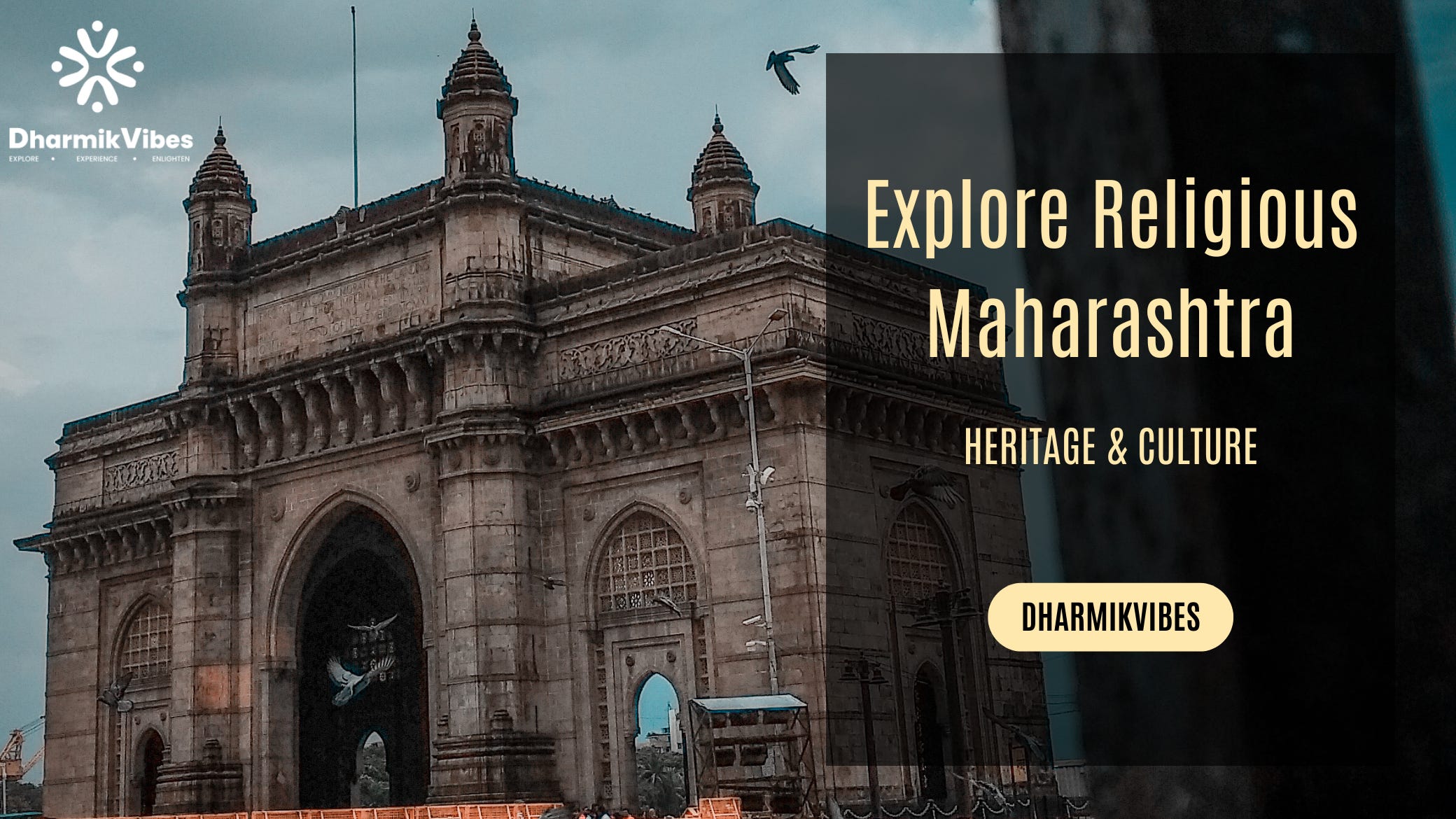Maharashtra's Religious Landscape: Temples, Pilgrimage Sites, Rituals, and Travel Guide
Maharashtra, a state rich in cultural and spiritual heritage, is home to some of India's most revered temples, pilgrimage sites, and sacred rituals. The state offers a unique blend of ancient traditions, vibrant festivals, and deep-rooted faith that attracts millions of devotees each year. From the famed Jyotirlingas to the grand Kumbh Mela, Maharashtra's religious landscape is a testament to its spiritual significance.
1. Major Temples and Pilgrimage Sites in Maharashtra
Maharashtra is home to countless temples that hold immense religious and historical importance. Below is a list of the most prominent ones:
1.1 Jyotirlinga Temples in Maharashtra
Among the 12 sacred Jyotirlingas in India, Maharashtra houses five, making it a significant pilgrimage destination for devotees of Lord Shiva.
Trimbakeshwar Shiva Temple, Nashik
One of the most sacred Jyotirlingas, known for its unique three-faced linga symbolizing Brahma, Vishnu, and Shiva.
Located near the origin of the Godavari River, it is a crucial site for Hindu rituals and ancestral rites (Pind Daan).
Bhimashankar Temple, Pune
Situated in the Sahyadri hills, this Jyotirlinga is known for its beautiful Nagara-style architecture.
The surrounding Bhimashankar Wildlife Sanctuary adds a scenic touch to the pilgrimage.
Grishneshwar Jyotirlinga, Aurangabad
The last of the 12 Jyotirlingas, located near the famous Ellora Caves.
It is known for its intricate carvings and historical significance.
Aundha Nagnath Temple, Hingoli
Considered the first Jyotirlinga, associated with mythological stories from the Mahabharata.
Parli Vaijnath Temple, Beed
Believed to be associated with Lord Vishnu and Lord Shiva, making it a prominent pilgrimage spot.
1.2 Famous Ganesha Temples – Ashtavinayak Yatra
The Ashtavinayak (eight Ganesha temples) circuit is one of Maharashtra’s most popular religious journeys.
Mayureshwar Temple (Morgaon)
Siddhivinayak Temple (Siddhatek)
Ballaleshwar Temple (Pali)
Varad Vinayak Temple (Mahad)
Chintamani Temple (Theur)
Girijatmaj Temple (Lenyadri)
Vighnahar Temple (Ozar)
Mahaganapati Temple (Ranjangaon)
Completing the Ashtavinayak Yatra is considered highly auspicious for devotees of Lord Ganesha.
1.3 Other Prominent Temples in Maharashtra
Shirdi Sai Baba Temple, Shirdi – One of the most visited pilgrimage sites, dedicated to Sai Baba.
Pandharpur Vitthal Temple – The spiritual home of Lord Vithoba (a form of Krishna), attracting thousands of devotees during Ashadhi Ekadashi.
Siddhivinayak Temple, Mumbai – A grand temple dedicated to Lord Ganesha, known for its architectural beauty and celebrity devotees.
Mumbadevi Temple, Mumbai – Dedicated to Goddess Mumbadevi, the deity after whom Mumbai is named.
2. Major Religious Rituals and Festivals in Maharashtra
2.1 Ganesh Chaturthi
The most celebrated festival in Maharashtra, especially in Mumbai and Pune.
Large idols of Lord Ganesha are installed in homes and public pandals, followed by grand processions on Visarjan (immersion) day.
2.2 Ashadhi Ekadashi Wari to Pandharpur
One of India’s biggest pilgrimages, Ashadhi Wari is an annual 21-day foot pilgrimage to Pandharpur.
Thousands of devotees, known as Varkaris, walk with palkhis (palanquins) to the temple of Lord Vithoba.
2.3 Kumbh Mela in Maharashtra
Nashik Kumbh Mela is held once every 12 years and is one of the four major Kumbh Melas in India.
The last Kumbh Mela in Nashik took place in 2015, and the next one is expected in 2027.
2.4 Other Important Religious Rituals
Gokulashtami (Dahi Handi) – Celebrated with human pyramids to break the hanging pot of curd, marking the birth of Lord Krishna.
Navratri and Durga Puja – Temples across Maharashtra host grand celebrations dedicated to Goddess Durga.
Mahashivratri – Devotees observe fasting and perform night-long prayers at Shiva temples like Trimbakeshwar and Bhimashankar.
3. Travel Guide for Pilgrims and Devotees
3.1 How to Reach Maharashtra’s Religious Sites
By Air: Major cities like Mumbai, Pune, and Nashik have airports with domestic and international connectivity.
By Train: Maharashtra is well-connected by Indian Railways, with Shirdi, Nashik, Pune, and Mumbai having major railway stations.
By Road: State-run MSRTC buses and private taxis provide excellent road connectivity to temples and pilgrimage centers.
3.2 Best Time to Visit
Winter (October – March) is the most pleasant time for temple visits.
Monsoon (June – September) is ideal for places like Bhimashankar and Trimbakeshwar due to lush green surroundings.
3.3 Accommodation for Pilgrims
Most major temples offer Dharamshalas (pilgrim accommodations) at affordable rates.
Hotels and lodges are available near temple towns like Shirdi, Nashik, and Pandharpur.
3.4 Important Travel Tips
Advance Booking: For major festivals like Ganesh Chaturthi and Kumbh Mela, early bookings are recommended.
Dress Code: Modest attire is required at most temples.
Local Transport: Auto-rickshaws, taxis, and buses are the best ways to explore temple towns.
Maharashtra’s religious landscape is deeply intertwined with India's spiritual traditions. Whether it is the Jyotirlingas, the grand Kumbh Mela, or the devotion-filled Pandharpur Wari, the state offers a profound spiritual experience for devotees. From the bustling temples of Mumbai to the serene pilgrimage sites in the Sahyadris, Maharashtra continues to be a beacon of faith, attracting millions of worshippers from across the world.
For those looking to embark on a spiritual journey, Maharashtra presents a perfect blend of divinity, tradition, and cultural richness. Whether you are a devotee or a spiritual traveler, Maharashtra’s religious heritage is sure to leave a lasting impression on your soul.


